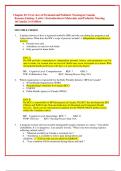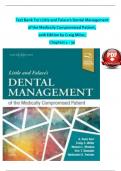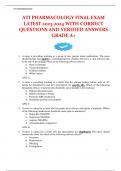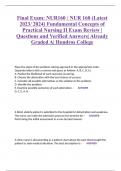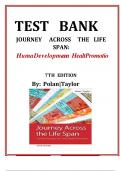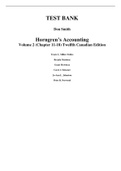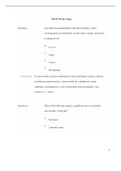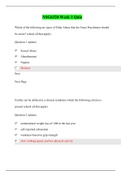Exam (elaborations)
Test Bank For Chemistry An Atoms First Approach, 3rd Edition Steven S. Zumdahl (Author), Susan A. Zumdahl (Author), Donald J. DeCoste (Author) Chapter 1-21 ||Complete A+ Guide
Test Bank For Chemistry An Atoms First Approach, 3rd Edition Steven S. Zumdahl (Author), Susan A. Zumdahl (Author), Donald J. DeCoste (Author) Chapter 1-21 ||Complete A+ Guide
[Show more]




